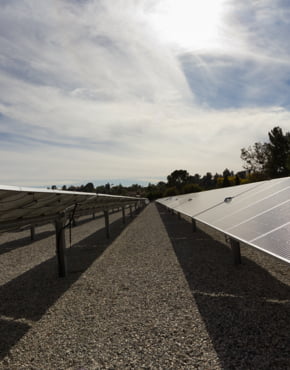Find a Document

Colorado River: A New Era of Sustainability
California put itself on the path toward Colorado River sustainability in 2003, when it reduced its use to its basic apportionment of 4.4 million acre-feet of river water. For decades, California was able to use more than this amount, relying on surplus water and water unused by Arizona and Nevada. But in the 1990s, those states began using their full apportioned supplies and California was compelled to cut back. The groundbreaking 2003 Quantification Settlement Agreement and related agreements set aside decades-old disputes and facilitated water transfers from farms to cities, funded lining the All-American and Coachella canals to reduce seepage and led to new agricultural conservation in California and partnerships with Metropolitan. The QSA, as it is known, marked a critical milestone in a new era of collaboration on the Colorado.
That same spirit of collaboration continues today. Among recent actions, more than 30 water agencies and providers from across the basin signed a Memorandum of Understanding committing to protect water supplies serving 40 million people through innovative water conservation programs, initiatives and policies within their communities.
Read our fact sheet: A Balanced Approach for Reducing Water Use.
Lea nuestra hoja informativa: Un Enfoque Equilibrado Para Reducir El Uso Del Agua.
Read the press release from November 16, 2022
Read the Memorandum of Understanding.
Read our Colorado River fact sheet.
Read our fact sheet on efforts to reduce reliance on the Colorado River.
Everybody Wins:
Ag-Urban Partnerships
Since the QSA, Metropolitan has invested millions of dollars to replace some of the surplus Colorado River water it lost. Through partnerships developed with agricultural agencies, Metropolitan pays participating farmers to conserve water while also ensuring the continued success of the agricultural economy. The water saved through these programs – which include partial land fallowing, crop rotation and irrigation improvements – is then made available to Metropolitan. These efforts provide Metropolitan greater flexibility to plan for and withstand times of shortage.
Bard Water District
Metropolitan pays farmers to not plant lower-value, water-intensive crops during spring and summer
Learn more: The Seasonal Land Fallowing Program
Palo Verde Irrigation District
Metropolitan pays farmers to fallow up to 28 percent of their land
Learn more: Land Fallowing & Crop Rotation Program
Learn more: Restoring Land & Ecosystems
The Quechan Tribe
Metropolitan and the Quechan Tribe have launched a two-year pilot program to conserve Colorado River water while supporting the Tribe's agricultural economy.
Learn more: An Urban-Agriculture Partnership with The Quechan Tribe
Imperial Irrigation District
Metropolitan funds water conservation improvements within IID
Law of the River
How the Colorado River’s resources are divided among the seven Colorado River Basin states and Mexico is governed by a series of interstate compacts, statutes, Supreme Court decrees, a treaty with Mexico, contracts and regulatory guidelines - all collectively known as the Law of the River.
Adapting to Climate Change:
A New Resiliency
As climate change reduces flows on the Colorado River and water levels of the system’s two largest reservoirs – Lake Mead and Lake Powell – drop, Metropolitan is forging valuable partnerships outside California as well. This new era of collaboration is helping ensure the continued reliability of Colorado River supplies across the West.

Intentionally Created Surplus
Through the ICS program, Metropolitan can store more than 1.65 million acre-feet of water in Lake Mead for use during dry years. Metropolitan collaborated with other states in the development of this program – creating valuable surface storage through cooperation rather than construction. View the ICS White Paper.

Drought Contingency Plan
Signed in 2019, Metropolitan worked with the seven Basin states to develop the DCP, which helps prevent Lake Mead and Lake Powell from reaching critically low levels. Under the DCP, each Lower Basin state agreed to store defined volumes of water in Lake Mead at certain elevations, and the Upper Basin received approval to store conserved water in Lake Powell.

Tribal Nations
Metropolitan has collaborated with several Native American tribes in the Colorado River Basin to develop water management programs, including a forbearance agreement with the Quechan Tribe and an exchange agreement with the San Luis Rey Band of Mission Indians.

Lower Colorado River Multi-Species Conservation Programs
To balance the use of Colorado River resources with ecological needs, federal and state partners created the LCR MSCP in 2005 to work toward the recovery of endangered and threatened fish and wildlife along the Lower Colorado. The program is creating more than 8,100 acres of new habitat.

Lower Colorado River Water Quality Partnership
To protect the source water quality of Colorado River supplies, Metropolitan is partnering with the Central Arizona Project and Southern Nevada Water Authority on initiatives to address water quality challenges including salinity, invasive species and industrial contaminants.

Other Programs
Metropolitan also has partnered with agencies in Nevada and Arizona to fund other projects important to protecting Colorado River supplies, including Warren Brock Reservoir, Yuma Desalting Plant and the Mexico Water Treaty Pilot Conservation Project (Minute 319 and 323).
Some photos courtesy Bureau of Reclamation.
Thanks to these programs, in 2019 Metropolitan put a record amount of water into storage in Lake Mead and helped California divert the lowest amount of Colorado River water in 70 years.
Colorado River Negotiations: Working Together for a New Era
Many of the agreements described above were made possible by guidelines that will terminate in 2026. As climate change further stresses the Colorado River and population continues to grow across the West, leaders from the Basin states are negotiating new guidelines and agreements to address a drier future. Those negotiations will continue for several years until new guidelines are finalized and adopted by the Secretary of the Interior for implementation in 2027.